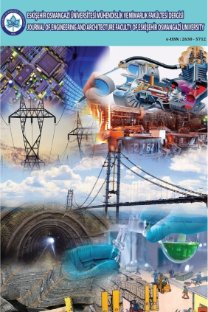Düşük plastisiteli zeminlerde dispersibilite özelliğinin farklı yöntemlerle değerlendirilmesi
Dolgu barajlarda oluşan göçmenin önemli bir nedeni olarak içsel erozyon gösterilmektedir. İçsel erozyon, zemin cinsine göre farklı şekilde oluşmaktadır. Bu tip göçmenin oluşmasında da, zeminlerin dispersif özelliğinin önemli bir etkisi vardır. Bu killerin doğru tanımlanması, sonradan oluşacak problemlerin çözümündeki zorluk ve yüksek maliyetten dolayı önemli bir aşama olarak değerlendirilmektedir. Bu çalışmada Afyon, Eskişehir ve Bilecik illerinde inşa edilmekte olan veya işletme aşamasında bulunan on barajın kil ocağından alınmış düşük plastisiteli yirmi yedi adet zemin örneği üzerinde, önce tanımlama deneyleri yapılmış, daha sonra çifte hidrometri, dağılma ve iğne deliği gibi dispersibilite deneyleri gerçekleştirilmiş ye bu deney sonuçları karşılaştırılmıştır.
Comparative study on dispersibility tests performed on low plasticity soils
internal erosion is considered as the most significant cause for the failure of earthfill dams. Different failure modes can develop depending on soil types. The dispersibility of soil is a dominant factor for internal erosion. If this type of soils is adequately defined and properly used, the serious problems which may be difficult to solve later and have high expenditures can be prevented. This paper includes the investigation performed on the determination of dispersibility properties of the low plasticity soils. It briefly presents the tests to describe the dispersibility properties of soils and discusses their limitations as depending on the comparative study on crumb test, double hydrometer and pinhole tests, based on the results of twenty-seven samples belonging to ten different projects which are under operation and construction stages in Afyon, Bilecik and Eskişehir provisions of Turkey.
___
- [1] H. Tosun, “Dispersif Killer ve Toprak Dolgu Barajlar Açısından Önemi” DSİ Teknik Bülteni, 1994, sayı:80, ss.51-60.
- [2] H. Tosun, “Dolgu Barajlar Yönünden Dispersif Killer ve DSİ Çalışmaları” 5. Ulusal Zemin Mekaniği ve Temel Mühendisliği Kongresi, 20-21 Ekim 1994, Ankara, ss. 98-110.
- [3] P.C. Knodel, “Characteristics and Problems of Dispersive Clay Soils”, Bureau of Reclamation, Materials Engineering Branch, R-91-09,17p. 1991.
- [4] H. Tosun, “Importance of Dispersive Soils for Earthfill Dams an a Research on Control Tests Adopted in Turkey” Symposium on Research and Development in the Field of Dams, 7-9 September 1995, Crass-Montana, Switzerland, ss. 133-144.
- [5] H. Tosun, 1997, “Comparative Study on Physical Tests of Dispersibility of Soils Used for Earthfill Dams in Turkey” ASTM Geotechnical Testing Journal, GTSODS, Vol.20, No.2, 242-251.
- [6] E.R. Tuncer, ” Toprak Dolgu Barajlarda İçsel Erozyon” Dolgu Barajlar Yönünden Zemin Mekaniği Semineri, DSİ Genel Müdürlüğü, 1995, Adana, ss.27-15.
- [7] H. Tosun, İ. Zorluer, H. Tozluk, H. Savaş, “Toprak Dolgu Barajlarda Dispersif Killerin Kullanımı ve Tasarım ve Kontrol Kriterlerinin Araştırılması” TÜBİTAK Projesi, P. No: İNTAG-719, 2001.
- [8] J.L. Sherard, R.S. Decker, N.L. Ryker, “Piping in earth dams of dispersive clay” Proceeding Specialty Conference on performance of Earth and Earth Supported Structures, ASCE, Vol.1, pp.589-626,1972.
- [9] J.L. Sherard, L.P. Dunnigan, R.S. Decker, “Identification and nature of dispersive soils” Journal of the Geotechnical Engineering Division, ASCE, Vol.102, n.GT2, pp.287-301, 1976
- [10] ICOLD, "Deterioration of Dams and Reservoirs, Examples and Their Analysis", International Commission on Large Dams, 1983.
- [11] H. Tosun, İ. Zorluer, H. Savaş, Ö. Taşkıran, H. Demirkol ve A. Kar, “Temel Sorunlarından Oluşan Baraj Göçmeleri” Osmangazi Üniversitesi, Geoteknik yayınları Serisi:99/1, Eskişehir, 95 s.1999.
- [12] USBR 5400-89, “ Determining Dispesibility of Clayey Soils by the Crumb Test Method”, Earth Manual II, United States Department of the Interior Bureau of Reclamation, pp. 414-418.
- [13] USBR 5405-89, “Determining Dispesibility of Clayey Soils by the Double Hydrometer Test Method”, Earth Manual II, United States Department of the Interior Bureau of Reclamation, 419-424.
- [14] ASTM D 4647-93, “Standard Test Method for Dispersive Characteristics of Clay Soil by Double Hydrometer” American Society for Testing and Materials, V.04.08.
- [15] USBR 5410-89, “Determining Dispersibility of Clayey Soils by the Pinhole Test Method”, Earth Manual II, United States Department of the Interior Bureau of Reclamation, pp. 425-437.
- [16] ASTM D 4221-90, “Standard Test Method for Identification and Classification of Dispersive Clay Soils by the Pinhole Test”, American Society for Testing and Materials,V.04.08.
- [17] B.M. Tucker, “Laboratory Procedures for cation exchange measurements on soils” CSIRO Aust. Div. Soils, Tech.pap. No.23.
- [18] G.H. Bolt and M.G.G. Bruggenwert, “Soil Chemistry-A Basic Element”, Elsevier Scintific Publ. Amsterdam, 1976.
- [19] TS 1900, “İnşaat Mühendisliğinde Zemin Deneyleri” , TSE, Ankara, 1987.
- [20] TS 1500, “İnşaat Mühendisliğinde Zeminlerin Sınıflandırılması”, Türk Standartları Enstitüsü, Ankara, 1987.
- ISSN: 1301-045X
- Yayın Aralığı: Yılda 3 Sayı
- Başlangıç: 2018
